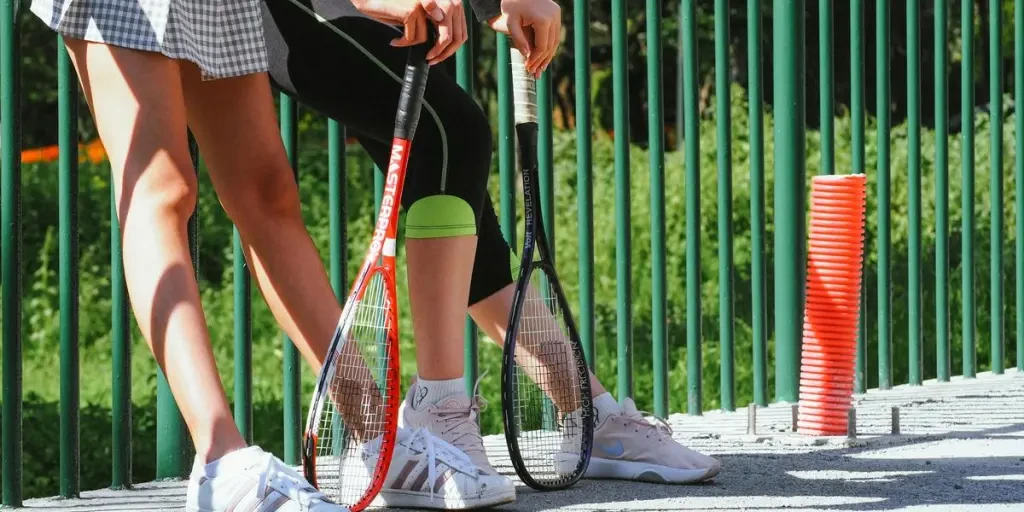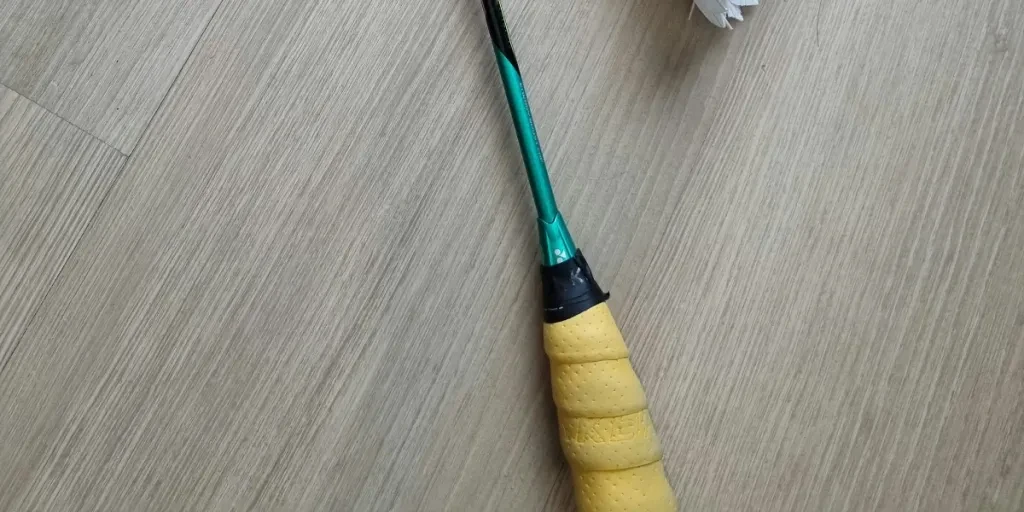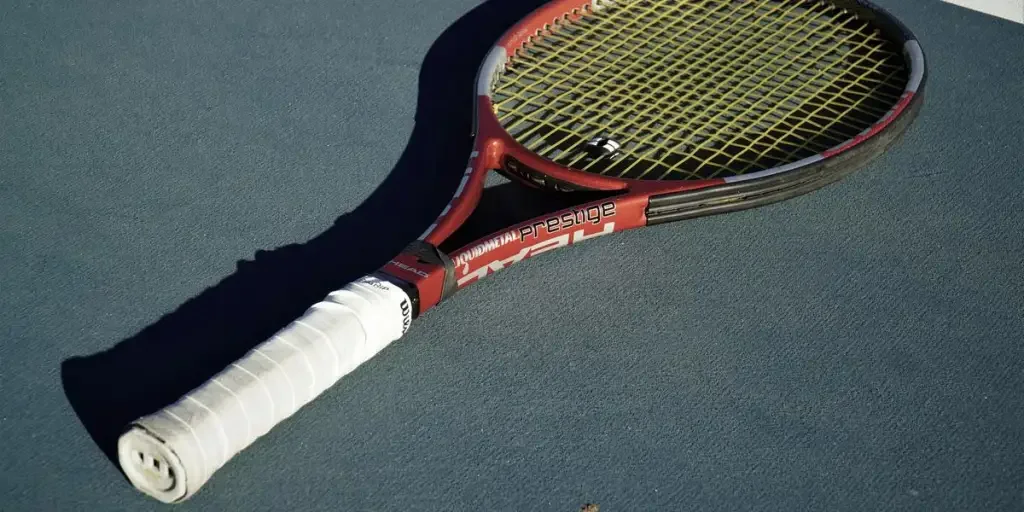Overgrips have become an essential accessory for athletes and sports enthusiasts alike. These thin, cushioned tapes are wrapped around the handles of racquets, bats, and other sports equipment to enhance grip, comfort, and performance. As the sports industry continues to evolve, the demand for high-quality overgrips is on the rise, driven by advancements in materials, design, and technology.
Table of Contents:
Market Overview
Innovative Materials and Designs
Technological Features and Advancements
Comfort and Durability
Price and Budget Considerations
Conclusion
Market Overview

The Growing Demand for Overgrips
The demand for overgrips has seen a significant increase in recent years, driven by the growing popularity of sports such as tennis, badminton, squash, and baseball. According to a report by Research and Markets, the global sports equipment market, which includes overgrips, is expected to grow at a compound annual growth rate (CAGR) of 5.78% from 2023 to 2028. This growth is attributed to the rising number of sports enthusiasts, increased participation in sports activities, and the growing awareness of the benefits of using overgrips.
Overgrips are not only used by professional athletes but also by recreational players who seek to improve their performance and comfort. The increasing adoption of overgrips in various sports has led to a surge in demand, prompting manufacturers to innovate and develop new products that cater to the diverse needs of consumers.
Key Players and Market Share
The overgrip market is highly competitive, with several key players dominating the industry. Some of the leading companies in the market include Wilson Sporting Goods, Babolat, Yonex, Head, and Prince Sports. These companies have established a strong presence in the market through their extensive product portfolios, innovative designs, and strategic marketing initiatives.
Wilson Sporting Goods, for instance, is known for its high-quality overgrips that offer superior grip and comfort. The company’s Pro Overgrip series is widely used by professional tennis players and has gained a reputation for its durability and performance. Similarly, Babolat’s VS Original Overgrip is popular among badminton players for its thin and tacky texture, which provides excellent control and feel.
According to a report by Statista, the global sports equipment market, which includes overgrips, was projected to reach USD 35.09 million in 2024, with a significant portion of the market share held by these key players. The competitive landscape is characterized by continuous product innovation, strategic partnerships, and mergers and acquisitions, which help companies maintain their market positions and expand their customer base.
Regional Insights and Trends
The overgrip market exhibits diverse regional trends, with varying preferences and demands across different regions. North America, Europe, and Asia-Pacific are the major markets for overgrips, each with its unique characteristics and growth drivers.
In North America, the market is driven by the high participation rate in sports such as tennis and baseball. The United States, in particular, has a strong sports culture, with a significant number of recreational and professional players using overgrips to enhance their performance. The presence of major sports equipment manufacturers in the region also contributes to the market’s growth.
Europe is another key market for overgrips, with countries like the United Kingdom, Germany, and France leading the way. The region’s strong emphasis on sports and fitness, coupled with the popularity of tennis and badminton, drives the demand for overgrips. European consumers also prioritize eco-friendly and sustainable products, prompting manufacturers to develop overgrips made from recyclable and biodegradable materials.
The Asia-Pacific region is expected to witness the fastest growth in the overgrip market, driven by the increasing popularity of sports such as badminton and tennis in countries like China, India, and Japan. The region’s large population, growing middle class, and rising disposable incomes contribute to the increasing demand for sports equipment, including overgrips. Local manufacturers are also exploring partnerships and collaborations to expand their market presence and cater to the diverse needs of consumers.
Innovative Materials and Designs

The Evolution of Overgrip Materials
Overgrips have come a long way since their inception, evolving from basic materials to advanced composites designed to enhance performance and comfort. Initially, overgrips were made from simple rubber or synthetic materials, which provided basic grip and sweat absorption. However, as the demands of athletes grew, so did the need for more sophisticated materials. Today, overgrips are crafted from a variety of materials, including polyurethane, microfiber, and even cork. Cork is highly favored for its comfort and sweat-wicking properties, making it an excellent choice for overgrips. This evolution reflects a broader trend in sports equipment, where materials are continually refined to meet the specific needs of athletes.
Cutting-Edge Designs for Enhanced Performance
Modern overgrips are not just about materials; their designs have also seen significant advancements. Ergonomic designs, which mimic the natural resting position of the hand, are becoming increasingly popular. These designs, often featuring a slight forward angle, reduce hand fatigue and improve grip stability. The “Best Trekking Poles of 2024” report highlights the importance of ergonomic grips, noting that brands like Leki and Black Diamond have excelled in this area. Additionally, overgrips now often include features like choke-up extensions, which provide a secure hold lower on the grip, enhancing balance and leverage during intense play.
Eco-Friendly and Sustainable Options
As sustainability becomes a critical concern across industries, the sports accessory market is no exception. Eco-friendly overgrips made from biodegradable materials or recycled components are gaining traction. These sustainable options not only reduce environmental impact but also appeal to the growing number of consumers who prioritize eco-conscious products. For instance, some overgrips are now made from natural cork, which is both renewable and biodegradable. This shift towards sustainability is part of a larger trend in sportswear and accessories, where brands are increasingly focusing on reducing their carbon footprint and promoting environmental responsibility.
Technological Features and Advancements

Smart Overgrips: Integrating Technology for Better Performance
The integration of technology into sports accessories has opened new avenues for enhancing athletic performance. Smart overgrips, equipped with sensors and connectivity features, are becoming a reality. These overgrips can monitor grip pressure, hand movements, and even provide real-time feedback to athletes. Smart technologies embedded in sportswear are expected to become mainstream, offering real-time feedback and advanced health monitoring. This trend is likely to extend to overgrips, providing athletes with valuable data to optimize their performance.
Anti-Slip and Moisture-Wicking Technologies
One of the primary functions of an overgrip is to provide a secure, non-slip surface, even during intense play. Modern overgrips incorporate advanced anti-slip and moisture-wicking technologies to achieve this. Materials like polyurethane and microfiber are designed to wick away sweat, keeping the grip dry and secure. The “Best Trekking Poles of 2024” report emphasizes the importance of moisture-wicking materials, noting that cork and EVA foam are particularly effective in this regard. These technologies ensure that athletes can maintain a firm grip, reducing the risk of slippage and improving overall performance.
Customization and Personalization Trends
Customization and personalization are becoming increasingly important in the sports accessory market. Athletes want equipment that not only performs well but also reflects their personal style and preferences. Overgrips are now available in a wide range of colors, textures, and patterns, allowing athletes to choose grips that match their aesthetic preferences. Additionally, some brands offer personalized overgrips with custom logos or designs. This trend towards customization is part of a broader movement in sportswear, where consumers seek products that are both functional and uniquely theirs.
Comfort and Durability

Ergonomic Designs for Maximum Comfort
Comfort is a critical factor in the design of overgrips, as it directly impacts an athlete’s performance and endurance. Ergonomic designs, which conform to the natural shape of the hand, are increasingly popular. These designs reduce hand fatigue and provide a more comfortable grip, allowing athletes to perform at their best for longer periods. Achieving the right balance between comfort and performance is essential for overgrips. While comfort is important, it should not come at the expense of performance.
Durability: Ensuring Long-Lasting Performance
Durability is another key consideration for overgrips, as they need to withstand the rigors of intense play. High-quality materials like polyurethane and cork are known for their durability, providing long-lasting performance even under heavy use. Cork handles are particularly durable, making them ideal for long-distance treks and multi-season use. This durability ensures that athletes can rely on their overgrips to perform consistently, reducing the need for frequent replacements.
Price and Budget Considerations

Price Ranges and Quality Correlation
The price of overgrips can vary widely, depending on the materials and features they offer. Generally, higher-priced overgrips are made from premium materials like cork or advanced composites, which provide superior comfort and durability. However, there are also budget-friendly options that offer good performance at a lower cost. The “Best Trekking Poles of 2024” report noted that while premium materials offer the best performance, there are also affordable options that provide good value for money.
Budget-Friendly Options for Bulk Buyers
For bulk buyers, such as sports teams or retailers, finding budget-friendly options is crucial. Many brands offer discounts for bulk purchases, making it more affordable to equip an entire team with high-quality overgrips. These bulk options often come in multi-packs, providing a cost-effective solution without compromising on quality. Budget-friendly options are available, particularly in materials like rubber, which offer good performance at a lower cost.
Seasonal Discounts and Promotions
Seasonal discounts and promotions are another way to save on overgrips. Many brands offer discounts during major sports events or at the end of the season, providing an opportunity to purchase high-quality overgrips at a reduced price. These promotions can be particularly beneficial for bulk buyers, allowing them to stock up on overgrips at a lower cost.
Conclusion
The evolution of overgrips in the sports and accessory industry reflects broader trends in material innovation, technological integration, and sustainability. As athletes’ demands continue to grow, so too will the advancements in overgrip design and functionality. Looking ahead, the integration of smart technologies and the focus on eco-friendly materials are likely to shape the future of overgrips, providing athletes with even more sophisticated and sustainable options.




